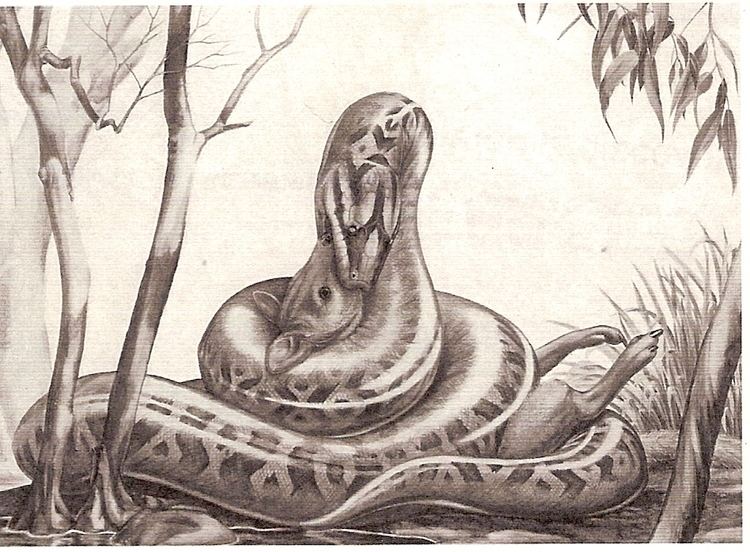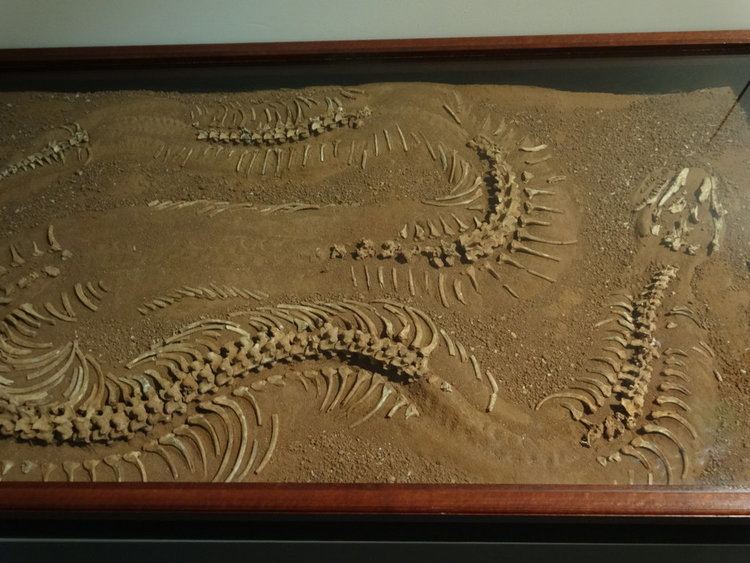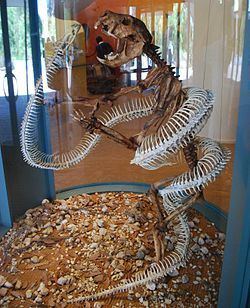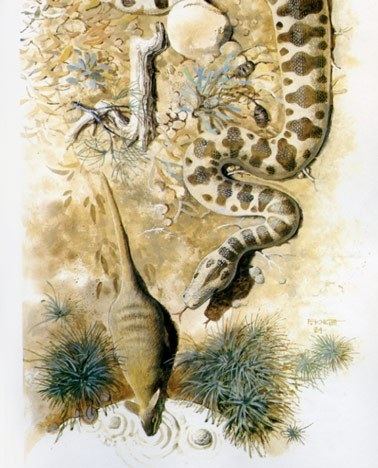Suborder Serpentes Phylum Chordata Order Scaled reptiles | Class Sauropsida Rank Genus | |
 | ||
Similar Madtsoiidae, Yurlunggur camfieldensis, Madtsoia, Eupodophis, Sanajeh | ||
Wonambi
Wonambi is a genus that consisted of two species of very large snakes. These species were not pythons, like Australia's other large constrictors of the genus Morelia, they are classified in the extinct family Madtsoiidae. This genus was a part of the extinct megafauna of Australia.
Contents

Diversity
The type species is Wonambi naracoortensis, a five to six metre long snake; the only other known species is Wonambi barriei.
Description

Wonambi seems to have been an ambush predator. Rather than using venom, the animal would kill its prey by constriction. The head of the animal was small, restricting the size of its prey.
Taxonomy and naming

Wonambi naracoortensis was first described from fossils collected at Naracoorte, South Australia, the first extinct snake to be found in Australia.

It was given the name Wonambi from the description, by the local Aboriginal people, of a serpent of the Dreamtime. This serpent, a mythological being commonly referred to by both Aboriginal people and Europeans as the Rainbow Serpent, was often held responsible for the creation of major features of the landscape. The Wagyl of the Western Australian Noongar people is thought to correlate to the South Australian people's Wonambi. It is cognate with the Yollungur genus, found at Riversleigh in Queensland and in the Northern Territory, which was up to 9 meters long with a body about 30 centimeters in diameter.

The family of this species, Madtsoiidae, became extinct in other parts of the world around 55 million years ago, but new species continued to evolve in Australia. These species are the last known to have existed, becoming extinct in the last 50,000 years.
Ecology
Wonambi naracoortensis lived during the Pleistocene Ice Age period, in natural sun-traps beside local waterholes, where they would ambush kangaroo, wallaby and other prey coming to the water to drink. For this reason, children were forbidden in Aboriginal culture to play at such places, and only allowed to visit when accompanied by an adult. Mapping such locations in Western Australia, has been found to be closely associated with areas the Noongar people regard as Waugal sacred sites.
Tim Flannery claims that this animal, along with other Australian megafauna, became extinct (partly) as a result of activities of the Australian Aborigines (for example, hunting and firestick farming).
